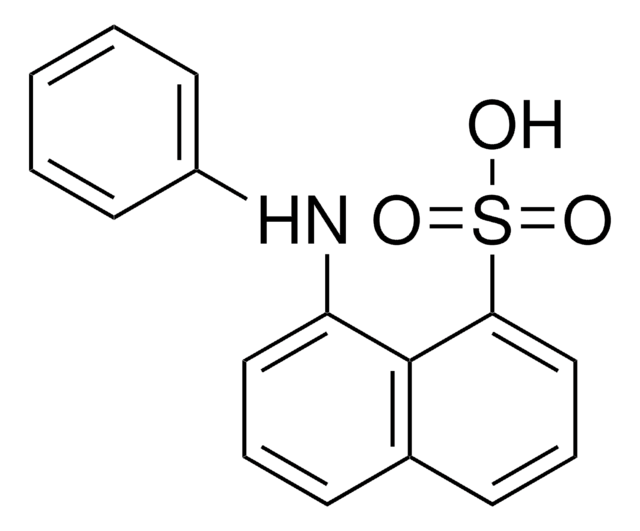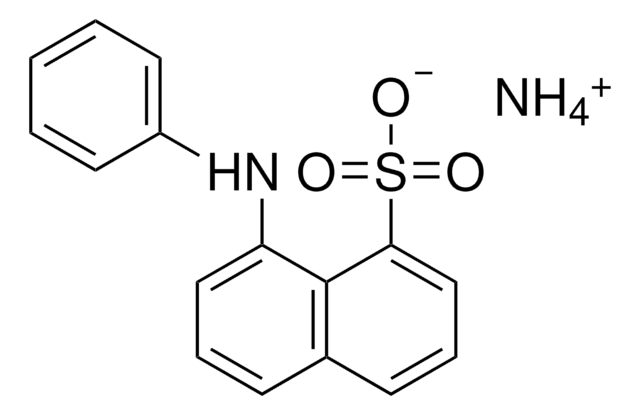10416
8-Anilino-1-naphthalenesulfonic acid ammonium salt
technical, ≥90% (NT)
Synonym(s):
1,8-ANS NH4, ANSA, Ammonium 8-anilino-1-naphthalenesulfonate, N-Phenyl peri acid
About This Item
Recommended Products
grade
technical
Quality Level
assay
≥90% (NT)
form
powder
color
, Green to Dark Green and Grey to Dark Grey and Green-Grey
solubility
NaOH: 1 N
H2O: soluble
methanol: soluble
fluorescence
λex 388 nm; λem 470 nm in 0.1 M Tris, 0.2 M KCl, pH 9.0, BSA
SMILES string
N.OS(=O)(=O)c1cccc2cccc(Nc3ccccc3)c12
InChI
1S/C16H13NO3S.H3N/c18-21(19,20)15-11-5-7-12-6-4-10-14(16(12)15)17-13-8-2-1-3-9-13;/h1-11,17H,(H,18,19,20);1H3
InChI key
IPBNQYLKHUNLQE-UHFFFAOYSA-N
Looking for similar products? Visit Product Comparison Guide
Application
Storage Class
11 - Combustible Solids
wgk_germany
WGK 3
flash_point_f
Not applicable
flash_point_c
Not applicable
ppe
dust mask type N95 (US), Eyeshields, Gloves
Choose from one of the most recent versions:
Already Own This Product?
Find documentation for the products that you have recently purchased in the Document Library.
Customers Also Viewed
Our team of scientists has experience in all areas of research including Life Science, Material Science, Chemical Synthesis, Chromatography, Analytical and many others.
Contact Technical Service










